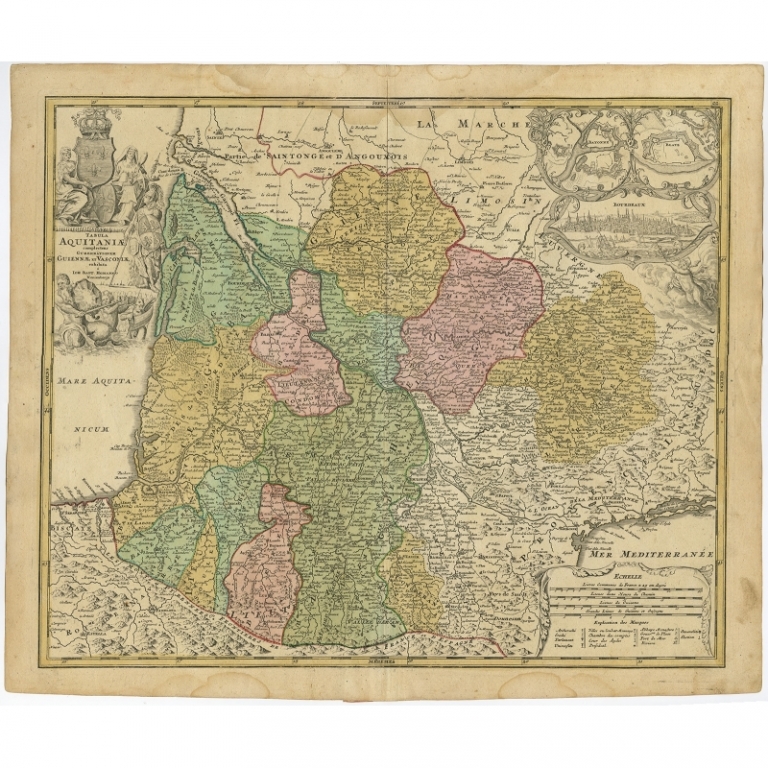FREE
WORLDWIDE
SHIPPING
No products
PCT-59835
Antique Map of Southwestern France by Homann Heirs (c.1730)
- Condition: Good, given age. Damp stained at the top, partly in image. Bottom margin with damp stains. Light staining and soiling in the margins. Some crinkles and creases. A few small spots. Original middle fold as issued. General age-related toning and/or occasional minor defects from handling. Please study image carefully.
- Date: c.1730
- Overall size: 63.5 x 53.5 cm.
- Image size: 57.8 x 48.3 cm.
Worldwide
shipping

Description: Antique map titled 'Tabula Aquitaniae complectens Gubernationem Guiennae et Vasconiae (..).' Map of southwestern France, fully engraved with mountains, forests, roads and cities. Decorative borders surround the three insets: fortification plans of Bayonne and Blaye, and a fine vignette bird's-eye view of the city of Bordeaux. The map carries good detail of the Pyrenees and a highly detailed depiction of the Canal du Midi, here labeled the Canal Royal. This fantastic undertaking connected the Atlantic (via the Garonne River) with the Mediterranean in one of the most incredible engineering feats of the 17th century. It was opened in 1681 after fourteen years of construction under the direction of Pierre Paul Riquet. The map is further embellished with a large, allegorical title cartouche. Source unknown, to be determined.
Artists and Engravers: Following the long period of Dutch domination, the Homann family became the most important map publishers in Germany in the eighteenth century, the business being founded by J.B. Homann in Nuremberg about the year 1702. Soon after publishing his first atlas in 1707 he became a member of the Berlin academy of Sciences and in 1715 he was appointed Geographer to the Emperor. After the founder's death in 1724, the firm was continued under the direction of his son until 1730 and was then bequeathed to his heirs on the condition that it trades under the name of Homann Heirs. The firm remained in being until the next century and had a wide influence on map publishing in Germany. Apart from the atlases the firm published a very large number of individual maps. The Homanns produced a Neuer Atlas in 1714, a Grosser Atlas in 1737, and an Atlas Maior with about 300 maps in 1780. They also issued a special Atlas of Germany with full sized plans of principal cities, school atlases and an Atlas of Silesia in 1750 with 20 maps.



